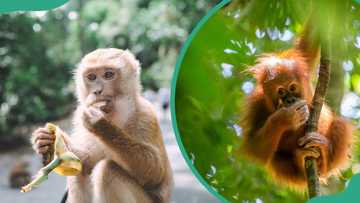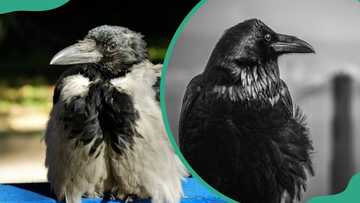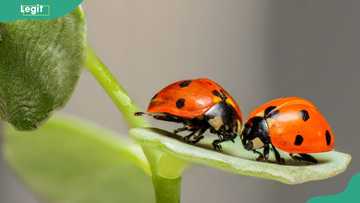20 fun facts about lions: learn more about the king of the jungle
Regarding wildlife, the lion is the king of the jungle. There are two species, Panthera leo leo found in Africa and Panthera leo persica from Asia. These beasts are primarily found in grasslands, savannahs, and shrublands. Discover fun facts about lions unknown to many people. Dr. Andrew Stein, the Founder of CLAWS (Communities Living Among Wildlife Sustainably) Conservancy, provides expert insights on fascinating details about lion behavior and their hunting strategies.
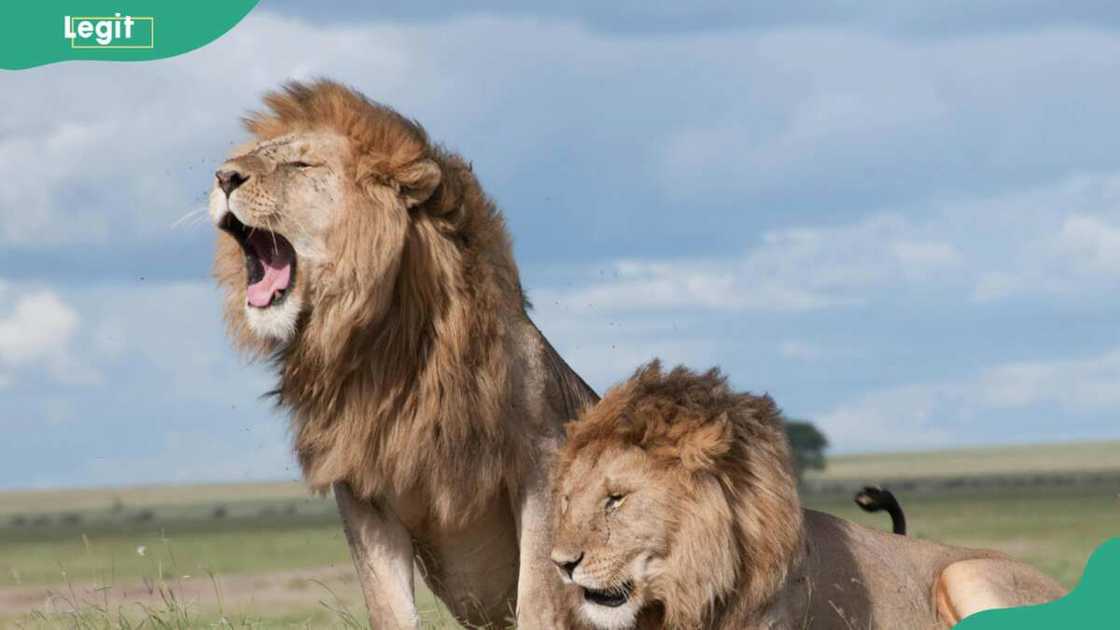
Source: UGC
TABLE OF CONTENTS
- 20 fun facts about lions
- 1. Second largest cat on earth
- 2. They are born spotty
- 3. Most males grow manes
- 4. The lionesses are the hunters
- 5. They are social creatures
- 6. Lion cubs are reared together
- 7. Lions can get their water from plants
- 8. Average lifespan
- 9. Voracious appetite
- 10. Lions have an efficient digestive system
- 11. Longest gestation period
- 12. They live in a group
- 13. They hunt during storms
- 14. The white lions are rare to find
- 15. They are the only cat species that roar together
- 16. They sleep long hours
- 17. Lioness can give birth to up to six cubs
- 18. They are at the top of the food chain
- 19. They roar loudly
- 20. The cubs mature at ages three to four
- Lesser known facts about lions
- How do lions' hunting strategies differ from those of other big cats?
- What are the unique features of a lion?
- Why are lions so special?
What are 20 interesting facts about lions? Lions are interesting creatures from the cat family. They have a muscular, broad-chested body, rounded head, and hairy tuft at the tail. Due to their fascinating nature, they have been featured in films including The Lion King, To Walk with Lions and Mia and the White Lion.
20 fun facts about lions
Lions are impressive creatures who are both loved and feared in equal measures. They are known to rule the jungle as they hunt for prey and protect their pride. Below are fun facts about lions you should know about.
1. Second largest cat on earth
The lion is second in the cat family, with the tiger being the largest. Lions can grow up to 4 feet at the shoulder and 10 feet long. They weigh between 290 pounds and 400 pounds. Females are smaller in stature than their male counterparts. According to the Guinness Book of World Records, Simba was the largest lion, standing at a shoulder height of 44 inches (1.11 meters).
2. They are born spotty
One of the fun facts about lions for kids is that lion cubs are born with rosettes and spots. These spots help them camouflage and protect them from predators when they are young. However, these spots on their sandy coats disappear gradually as they grow. Some lionesses retain their spot, but the males lose them altogether.
3. Most males grow manes
Most male lions have manes when they get older. The manes, which grow up to 16 centimeters long, signify dominance. However, some African male lions do not grow manes due to the hot climate. Manes help reduce heat loss and grow on lions in colder areas.
4. The lionesses are the hunters
In the animal kingdom, the male species are the primary hunters of prey. However, in the lion kingdom, it is different. According to BBC Earth, the lionesses hunt, although sometimes the males join them. Lionesses are smaller and more agile, which is handy when stalking and killing prey. The cubs start hunting when they are about a year old.
5. They are social creatures
Although cats are solitary creatures, lions are known to be social creatures. They live in groups and are the only animals in the cat family that do so. These prides are made up of up to 40 lions. Primarily, males are three to four, and females can be up to 12, along with the young ones.
6. Lion cubs are reared together
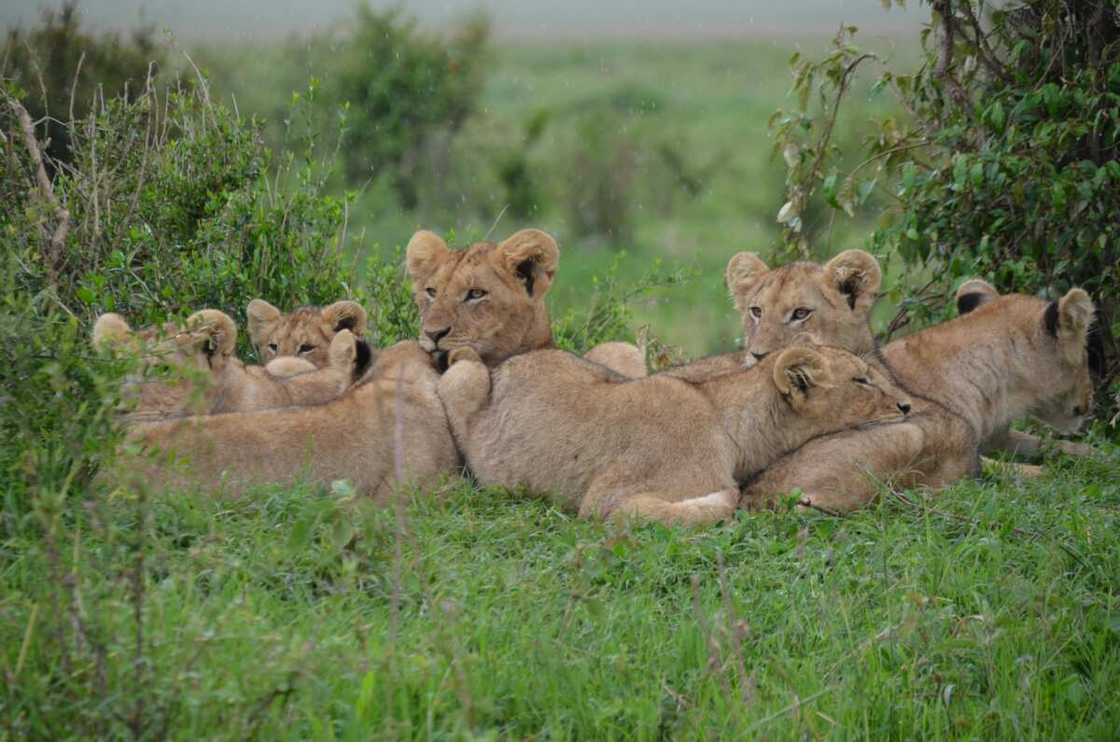
Source: UGC
It is said that it takes a village to raise a child, and this saying is more common among lions. Since they live in a pride, lionesses rear their cubs together. Any cub can suckle any female, and the responsibility of defending the cubs is shared by the whole pride.
7. Lions can get their water from plants
Lions are highly adaptable animals that can survive in arid areas. They live in arid and semi-arid regions on the African continent, including deserts like Kalahari in Namibia. They get their water from their prey, and in many cases, most of their water comes from plants. The Tsamma melon is one plant known to provide water to lions.
8. Average lifespan
Despite their eventful lives, lions have a long lifespan. Although they face daily struggles, they can live between 12 and 16 years. However, some are lucky to live up to 25 years in controlled environments where they get food and care.
9. Voracious appetite
Predators are carnivorous and known to have a high appetite. A lion can consume 30 kg of meat. The muscular cat will rest, nap, and resume feeding when there is more meat. Nevertheless, the energy required during hunting is significant, hence the high consumption.
10. Lions have an efficient digestive system
Since there is no abundance of food in the jungle, lions can only eat when they have killed prey. This could be after every three to eight days.
They, therefore, maximize consumption as their stomach can hold about 50 kilograms of meat. This is about a quarter of their total body weight. Their digestive tract can digest and absorb these nutrients slowly and effectively.
11. Longest gestation period
Lions have one of the most extended gestation periods. Their pregnancy period is the longest among cats, lasting between 100 and 114 days. This is over three months, and they are followed closely by tigers, with periods lasting 93 and 112 days.
12. They live in a group
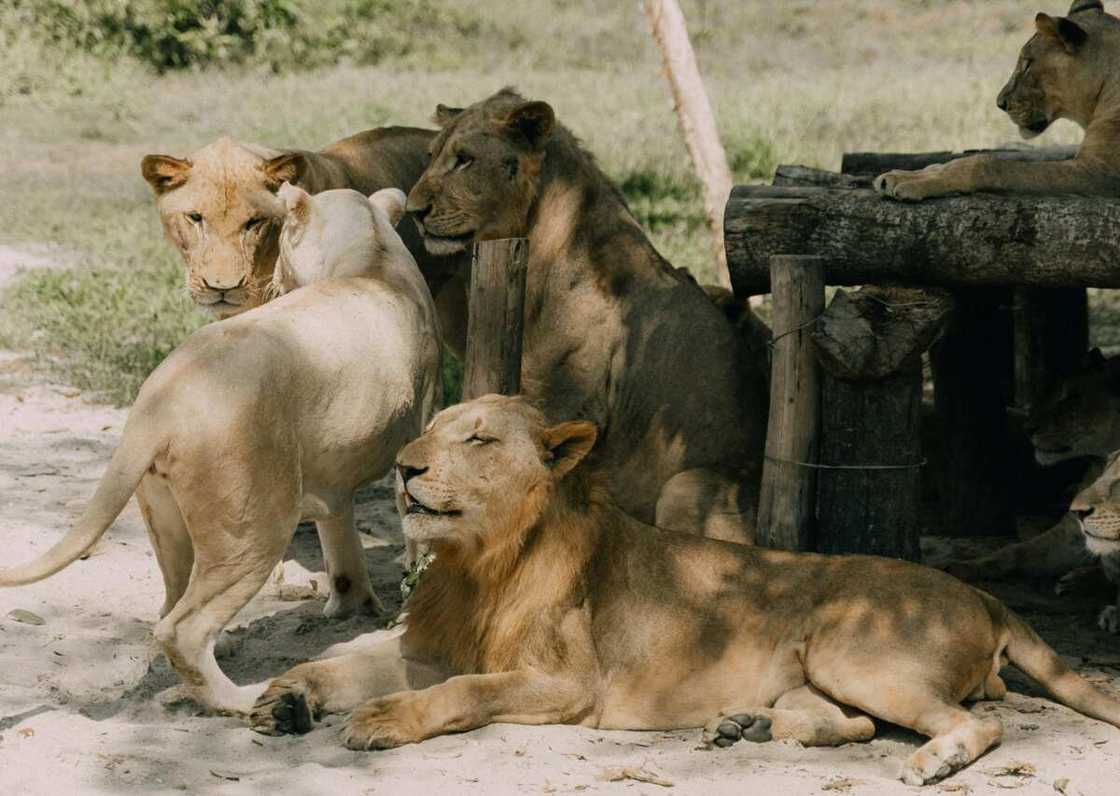
Source: UGC
Lions live in a group known as a pride. A pride comprises two males, six related females, and multiple cubs of both genders. The males protect the pride, and the lionesses feed it. Each pride has its territory and hunts other animals around it.
13. They hunt during storms
While many animals seek shelter during the storm, lionesses are out hunting during the storms. This gives them an advantage over their prey, who may seek refuge during these times. The wind and the noise from the rain make it hard for the prey to hear them. They also like to hunt in the dark because their eyes have adapted to darkness.
14. The white lions are rare to find
According to Global White Lion Protection Trust, white lions result from a rare genetic condition caused by leucism. The female and male mating must have the gene to produce a white cub. The exotic creatures are primarily found in the Southern African region.
15. They are the only cat species that roar together
Cats don't purr or roar together, but this is not true with lions. Lions roar together, with cubs joining in for about 40 seconds. This joint roaring marks their territory.
16. They sleep long hours
Lions love to lay around and relax. According to the Henry Vilas Zoo, they enjoy long hours of sleep, mostly up to 21 hours daily. This is primarily because they eat and store food in their stomachs for up to a week. Long sleep allows the lions to preserve the energy needed during hunting.
17. Lioness can give birth to up to six cubs
In many cases, lionesses give birth to around three cubs at a time. According to the International Fund for Animal Welfare, there are instances where they give birth to up to six cubs. These cubs are hidden from other pride members until they gain strength to keep up with the rest. They join the pride after about six weeks.
18. They are at the top of the food chain
One of the dangerous facts about lions is that they are the top predators. This means they are on top of the food chain in the wild, hence the name king of the jungle. They are not threatened by any other animal in the wild but are a threat to humans as well.
19. They roar loudly

Source: UGC
Unlike other cats, lions don't purr; they roar. A lion's roar is one of the scariest things. Their roar is loud and can be heard miles away. The call can reach decibels, the same level as a chainsaw. Both genders roar, but males roar as a sign of dominance, while females roar to communicate during mating.
20. The cubs mature at ages three to four
Lions are polygamous and breed throughout the year. Cubs mature between three and four years old and are ready to mate. The females, however, start to mate when they are two years old.
Lesser known facts about lions
In an interview, Dr. Andrew Stein, the Founder of CLAWS (Communities Living Among Wildlife Sustainably) Conservancy, shared exciting and lesser-known facts about lion behavior. They include:
- Lions breastfeed each other's cubs:
If two sisters have cubs simultaneously, the cubs will be suckled by either. This extends to other females in the pride as well. Since prides are made up of mothers, daughters, sisters, aunts, and grandmothers, if the cubs are of similar age, the lactating females can provide food.
- Prides are not always together:
Although lions are social and found in prides, those prides do not always stick together. They will separate for days or weeks to hunt in smaller groups before returning together.
- The lion's mane (the hairs on the head) serves many purposes. Dr. Stein mentions:
- During a fight, it can protect a male lion's head, neck, and chest.
- It can determine the individual's strength since manes grow darker with age and successful territory defense.
For example, when a male first grows the mane, it is blonde and then turns a darker reddish brown to almost black (in some places). In a lost fight, males often lose fur from their mane that grows back in the blonde color. Usually, the color of the mane signals females that the male is the strongest and the best defender for her and her cubs.
4. Manes can also be negative on scorching days; male lions quickly overheat.
How do lions' hunting strategies differ from those of other big cats?
Dr. Stein highlights some similarities and differences in lion's hunting strategies compared to other big cats:
1. Lions stalk their prey and try to get close before a chase like leopards, jaguars, and tigers. He explains:
Since lions are social, they can assist each other with strategy. I have seen lions separate to different angles and silently stalk before chasing prey from one individual towards another for the kill. Each individual has different skills that can help with the hunt, and they exploit these skills to get their prey.
2. Lions use a different strategy to outwit prey. Dr. Stein shares an illustration of how lions hunt livestock. He said:
When cattle are put in an enclosure (boma or kraal) for the night, leopards jump over the top. Hyenas dig underneath. Lions, however, roar to cause panic among the cattle, who break out independently. The lions sit and wait for the cattle to come to them and pounce.
What are the unique features of a lion?
Lions have unique features that make them stand out from other cats. Here are some of their distinctive features.
- They are social animals who live in pride
- Lions are mighty but lazy and can sleep for up to 21 hours.
- The lionesses are the hunters of prey and bring food for the pride
- The male and female look different.
Why are lions so special?
Lions are the only cats that live in groups. These cats also rest most of their time and are the top predators. They have the loudest of any big cat and can be heard up to 8 kilometers away.
Lions are often called the jungle kings because they are at the top of the food chain. They are members of the cat family and have unique features that make them stand out. To learn more about them, look at the list of fun facts about lions above.
Legit.ng published an article about the meaning of the carnation flower. The carnation flower, Dianthus caryophyllus, is among the oldest flowers. It is also one of the most popular cut flowers sold commercially. Carnations have a unique shape and are known for their distinct symbolism of fascination, distinction, and love.
Carnations are among the most beautiful flowers. Their captivating colors and shapes make them stand out. Due to its spiritual symbolism, the carnation is often called the flower of God. Find out more about this fascinating flower and what makes it unique.
Source: Legit.ng

Naomi Karina (Lifestyle writer) Naomi Karina has been a digital content writer for more than two years. She joined the Legit team in August 2022. She graduated Bachelor of Commerce from KCA University in 2012. She also holds a Higher Diploma in Human Resources from the IHRM and a Diploma in Marketing from Kenyatta University. She is a content creator who enjoys writing about various topics such as biographies, entertainment and business. In 2023, Naomi finished the AFP course on Digital Investigation Techniques. She expanded her skills in 2024 by undertaking the Google News Initiative course.

Mary Ugbodaga (Lifestyle Journalist) Mary Ugbodaga is a Legit.ng journalist with 7 years of experience in journalism and media communications. She graduated from Covenant University in 2018 with a Bachelor's degree in Mass Communication/Media Studies. Mary previously worked as a journalist at TheCable, CNBC AFRICA, Voice of Nigeria, KPMG Nigeria. Email: mary.ugbodaga@corp.legit.ng.


